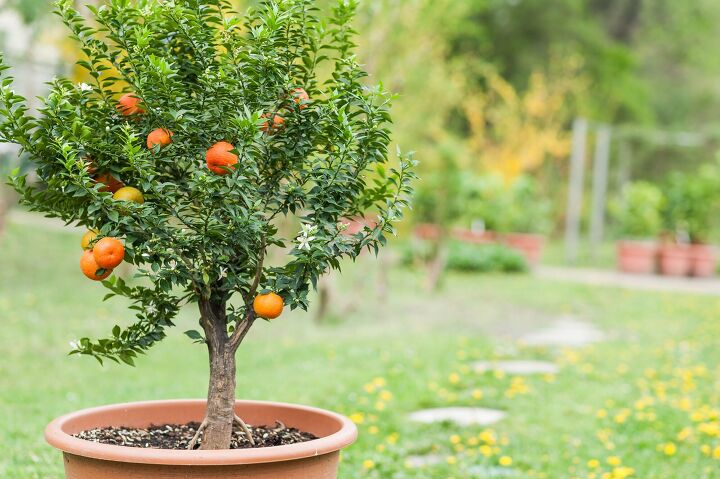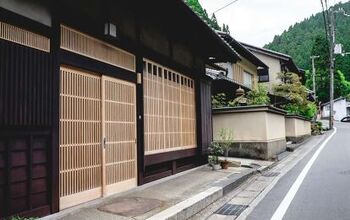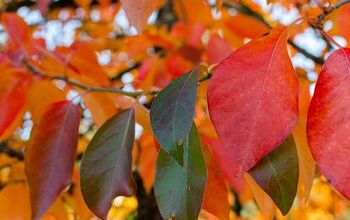What Citrus Trees Can Survive An Annual Frost?

Citrus trees are fantastic additions to your property. The blossoms smell fragrant and lovely in the breeze, and the fruit allows you to enjoy sweet, tangy, or sour fruit in abundance. But citrus thrives in warm climates and often dies off in a freeze. But if you live in an area where the temperatures dip below freezing every now and then, you might wonder if there are any citrus trees that can survive annual frosty conditions.
There are several types of citrus trees that can survive even when nighttime temperatures dip occasionally below freezing. Kumquats, tangerines, and satsuma mandarin oranges are all great citrus choices for growing when there is a risk of an occasional overnight frost. Some grapefruit, tangerine varietals, and types of naval orange work as well. You can even try some sour citrus like Meyer lemons or limequats.
If you have done any research on citrus trees and their growing conditions, you have already found out there are hundreds of types of citrus with all sorts of different needs. Many citrus trees simply can’t withstand temperatures below freezing. But if you live somewhere with occasional winter frosts, don’t worry. There are actually a handful of great citrus tree options for you. Check out our list of the top ten citrus trees that survive below-freezing temperatures and produce amazing fruit.
10 Citrus Trees That Can Survive Through A Frost
1. Meiwa Kumquats
Kumquats are a unique and incredibly delicious type of citrus. Some types of kumquats will die in frost, but several other types are strong enough to survive frosty nights as low as 25 degrees or so. Perhaps the best option among these resilient varieties is the Meiwa kumquat.
Not only are Meiwa kumquats hearty and able to survive in conditions that briefly reach the mid-twenties Fahrenheit, but they are also delicious. Meiwa kumquats are very sweet and have few seeds. This is important to note because some other resilient kumquat varieties are quite sour. You can even eat the skin on these fruits, which is an added bonus. These trees produce lots of fruit once a year, usually in late fall.
2. Calamondins
Calamondins are tiny citrus with tons of acidic flavor that you can use in all sorts of recipes. These small fruits are also known as calamansi, and are wildly popular in Filipino cuisine as well as some Asian recipes.
These fruits ripen but still retain their strong green exterior, even as the fruit inside is a juicy orange. These trees are very fruitful and can produce hundreds and hundreds of these tiny specimens. While the fruit is small and filled with seeds, the juice is tart and amazing. It is used in cocktails, fruit juices, marinades, soups and so much more.
If you love to cook and are looking for a citrus tree that can survive an annual frost, then the calamondin tree is a fantastic option.
3. Limequats
If you are looking for a fun and unique citrus tree to add to your collection, then consider a limequat tree. Limequats are one of the many hybrid citrus species invented by humans. They are a fusion of the kumquat and key lime varieties.
Both kumquats and key limes are hearty, delicious, and resilient in chillier weather, and the limequat is as well. This tree is a great option for someone looking for a lime flavor that can withstand frost with ease. They are also a fun and unique species that you aren’t likely to find in stores, so they are great to give away to friends as well.
4. Owari Satsuma Mandarin
Mandarin oranges are tasty, popular, and versatile, and sometimes they are even capable of serving in colder conditions, like places with a shorter growing season. There are several types of mandarin species, and they all have different characteristics.
If you want to try growing mandarin oranges in a climate where temperatures dip below freezing from time to time, consider the Owari satsuma mandarin orange. Most satsuma mandarin oranges are ideal citrus trees for those tricky cooler climates where winters can have a few cold days.
What makes the Owari type particularly appealing is that it can survive these extremes, and it is also one of the tastiest varieties. Omari’s have a great sweet and juicy flavor, and they also have very few seeds.
5. Citrumelo Hardy Grapefruit
Believe it or not, grapefruit are fairly resistant to frost damage. They can usually take a few nights where temperatures dip below freezing, especially when precautions are taken. But if you are looking for a sure bet, and a variety that can withstand all-but-certain frosty temperatures from time to time, then opt for the Citrumelo Hardy Grapefruit tree.
These trees grow to about six feet and produce lots of great and flavorful fruit. They are also known to be the best species of grapefruit for those living somewhere with an annual frost.
6. Meyer Lemon
If it is a lemon tree that you are hoping to plant in your temperamental climate where temperatures dip below freezing, look no further than the Meyer lemon. Meyer lemons are another hybrid species of citrus and are known for their juicy fruit and ability to withstand cooler temperatures.
This is why you often find Meyer lemon in certain southern recipes in places where winter frost is not uncommon. Meyer lemons are versatile, produce lots of large fruit, and are the perfect lemon tree for those worried about potentially cold conditions.
7. Bitter Orange
If you aren’t committed to a sweet citrus fruit but are just looking for a citrus plant you can have fun with, the bitter orange is a great option. The bitter orange can grow in cooler climates as long as you protect your citrus trees during overnight frosts. And while the fruit isn’t sweet, it makes fantastic jams and marmalades.
If you or someone in your family likes canning and making fresh preserves, you should definitely give this tree a try. They are perfect for orange marmalade.
8. Tangerines
Tangerines are wildly popular and found in grocery stores around the world. Believe it or not, they can even withstand an occasional frost. While not as cold-hardy as some of the other varieties on this list, they can survive frost when you take the right precautions. Just make sure you keep an eye on the weather and cover these plants up when temperatures look to dip below freezing for more than a few hours. After all, if you winter-proof your home, you should also winter-proof your garden.
9. Tangelos
Tangelos have become a delicious and popular hybrid that is a mix between two other fruits on this list: the tangerine and the mandarin. They do well in cooler temperatures and can handle dips below freezing.
These fruits have amazing flavor, are full of juice, and tend to be low in seeds, making them a favorite among citrus lovers. Just like with all other citrus plants on this list, make sure you cover them when temperatures get particularly cold.
10. Cara Cara Navel Oranges
If you are only interested in growing oranges, not some unique hybrid or sour substitute, you should try cara cara naval oranges. Cara cara navel oranges can dip below freezing and lower once they have grown to maturity. Naval oranges are the pinnacle of juicing and eating oranges. So, if you are looking for a classic orange tree but live in a climate where that proves difficult, give the cara cara navel orange tree a try.
Wrapping Up Citrus Tree Types That Last Through A Frost
Citrus trees love subtropical and tropical climates. But just because you don’t live somewhere surrounded by palm trees doesn’t mean you can’t have a citrus tree or two in the yard. Some citrus varieties that can withstand an annual frost include kumquats, tangelos, satsuma mandarins, and even Meyer lemons.
You can even grow certain types of grapefruit and navel oranges. Just make sure you cover your tree and keep it insulated when temperatures look to dip below freezing for longer periods, especially when the tree is young.
Related Guides:

Tom Gaffey is an expert writer who currently resides in Washington D.C. Tom has a passion for real estate and home improvement writing, as well as travel and lifestyle writing. He lived the last twelve years in Hawaii where he worked closely with luxury resorts and event planners, mastering his knowledge of aesthetics and luxury products. This is where he found his passion for home improvement and a keen interest in DIY projects. Currently, Tom resides in Washington D.C, and also working on his debut fiction novel.
More by Tom Gaffey














![How Much Weight Can a 4×4 Support Horizontally? [It Depends!]](https://cdn-fastly.upgradedhome.com/media/2023/07/31/9070333/how-much-weight-can-a-44-support-horizontally-it-depends.jpg?size=350x220)












